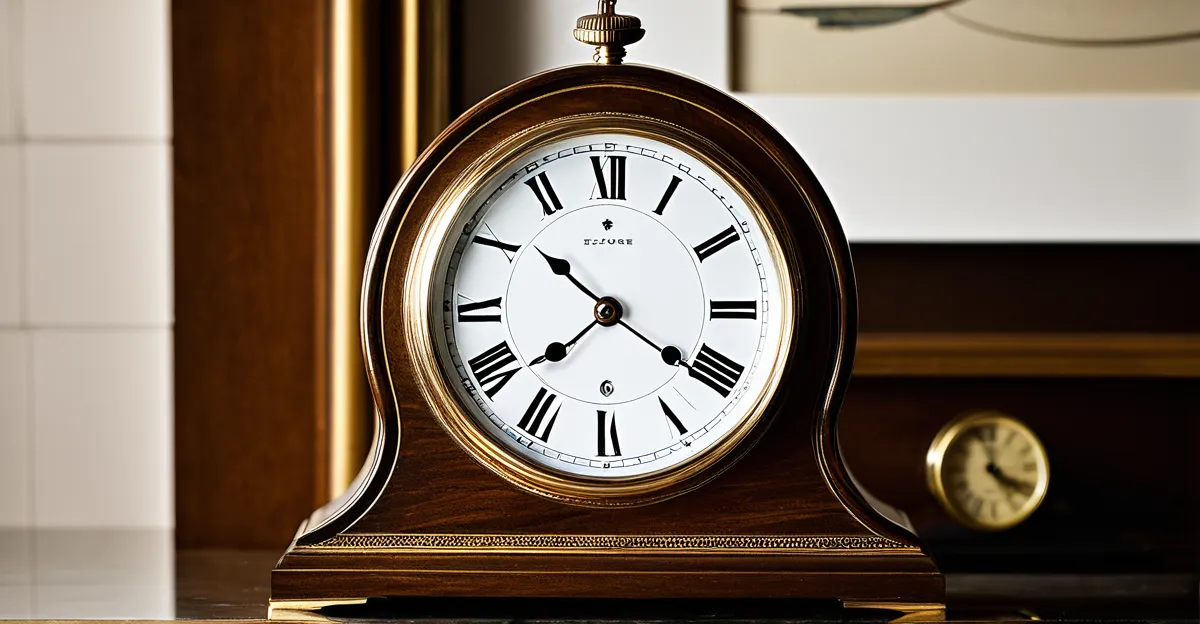Antique mantel clocks blend craftsmanship and history, adding timeless elegance to any space. From ornate French designs to sturdy American brass models, these timepieces showcase unique regional styles and materials. Understanding their origins, identifying features, and value can transform a simple clock into a cherished heirloom or a savvy investment. Discover what makes each mantel clock a captivating piece of living history.
Researching and Acquiring Antique Mantel Clocks: What Buyers and Collectors Need to Know
When exploring antique mantel clocks, buyers and collectors often aim to enhance a collection, make a sound investment, decorate with timeless charm, or select a memorable gift. These clocks offer a blend of artistry and history—especially pieces crafted in oak, mahogany, brass, or porcelain, with iconic styles from French, German, and American origins.
Additional reading : Transform Any Small Space: Design a Chic and Efficient Home Gym in the UK
For purchasing, trusted options include established antique dealers, recognized online auction sites, and specialized antiques marketplaces. These sources regularly update listings—sometimes daily as in 2025—so new options and price points frequently appear. An engaged community ensures a responsive buying process, where questions about provenance or clock specifics are swiftly addressed.
When assessing an item, start by scrutinizing authentication marks, such as maker signatures or engraved dates. The condition is critical: well-preserved clocks, ideally retaining original components and finish, are both more valuable and more reliable. Professional servicing adds further assurance—a reputable seller should provide clear maintenance and repair history for each piece.
Also read : Explore timeless elegance: top antique mantel clocks to cherish
Collectors should also research the market to track typical price ranges. Detailed comparison of case materials, movement types, and the presence of distinctive detailing helps buyers spot genuine antique mantel timepieces and avoid modern reproductions.
Defining and Exploring the History of Antique Mantel Clocks
Origins and Purpose of the Mantel Clock
Precision: An antique mantel clock is defined as a timekeeping device designed to sit atop a mantelpiece, originating in mid-18th century France. Initially, these clocks provided an elegant solution for displaying time prominently in the home while serving a decorative purpose. Their manageable size made them suited for placement on shelves above fireplaces, bridging form and function as both utility and ornament.
Historical Development: From 18th-Century French Designs to Modern-Day Popularity
The journey of the mantel clock spans from elaborate 18th-century French styles—often marked by exquisite sculpting and gold gilding—to the varied forms of the 19th century. During this period, designs diversified, evolving into shapes that included statuettes, architectural elements, and classical motifs. By the 20th century, ornamentation lessened as clockmakers embraced more understated elegance. Through each era, mantel clocks remained a symbol of refined taste, adapting to shifting trends while maintaining their distinct character.
Materials and Decorative Styles Through the Ages
Throughout the 19th century and beyond, marble mantel clock varieties and wooden case styles became increasingly popular. Materials ranged from oak and mahogany to porcelain and intricate brass casings. French style mantel timekeepers, in particular, are celebrated for their decorative artistry and diverse finishes, illustrating the rich craftsmanship of their historical context.
Noteworthy Styles, Makers, and Identification Tips for Collectors
Influential regional styles: French Empire, Victorian, German, and American
Mantel clocks reveal their heritage through distinctive regional styles. The French Empire style, recognized for its classical motifs and opulent gilded ornamentation, often features marble or gilt bronze cases with sculpted allegorical figures. Victorian era mantel clocks emphasize dark woods and elaborate carvings, while German examples from the late 19th and early 20th centuries display disciplined, precise casework and reliable movements. American mantel clocks, notable for their practicality, frequently employ oak, cherry, brass, and iron, with designs ranging from simple wooden cases to ornate brass skeleton forms.
Major makers and brands and their distinguishing features
Key mantel clock makers—such as Seth Thomas, Ansonia, and Junghans—are identified by unique construction traits. Seth Thomas mantel clocks are renowned for their robust American movements and often showcase Adamantine finishes that mimic marble. German brands like Kienzle favor refined detailing and precise engineering, while classic French makers supplied pieces with intricate metalwork, porcelain, or marble.
Identifying an original and valuable mantel clock: marks, signatures, and materials
Collectors inspect clocks for clockmaker signatures or engraved marks—usually on the dial or movement. Authentic and valuable mantel clocks typically retain their original materials, such as solid mahogany, oak, or brass. Evidence of maker’s stamps or serial numbers, along with distinctive engravings, acts as proof of authenticity, supporting valuation and historical research.
Evaluating Value, Restoration, and Collecting Trends
Price Guide: What Affects Value, from Rarity to Condition
Antique mantel clock values depend on several measurable factors. Using the SQuAD approach, value is primarily influenced by rarity, condition, material, provenance, and maker. Highly sought-after pieces, such as 18th- and 19th-century French or Victorian mantel clocks, command premium prices when well preserved. Clocks with original movements, known makers, clear engravings, and intact cases retain higher value. Oak and marble cases, as well as signature details, can also boost worth—especially when minimal replacement parts are involved. Price ranges span widely, from modest sums suitable for budget collectors to luxury pieces for established enthusiasts.
Restoring and Maintaining Vintage Mantel Clocks: Expert Tips and Common Pitfalls
Correct restoration is crucial for both enjoyment and investment. Always document original engravings and finishes before any intervention. Focus on gentle cleaning, careful oiling of gears, and using original parts where possible. Avoid over-polishing or replacing mechanisms indiscriminately, as these can lower authenticity and decrease value. If chimes are misaligned, slowly move the hands forward, and consult manuals, supporting both accuracy and longevity.
Market Trends: Investment Potential and the Enduring Appeal of Mantel Clocks
Collecting vintage mantel clocks continues to attract interest in 2025. Increased demand for unique, decorative timepieces ensures robust value retention, especially for clocks from notable makers and eras. Collectors favor clocks that blend historical significance with visual appeal, ensuring their status as both heirlooms and functional art.



